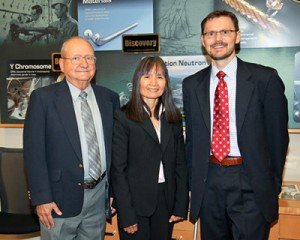By tweaking the formula for growing oxide thin films, researchers at the Oak Ridge National Laboratory achieved virtual perfection at the interface of two insulator materials.
This finding, published in the journal Advanced Materials, could have significant ramifications for creation of novel materials with applications in energy and information technologies, leading to more efficient solar cells, batteries, solid oxide fuel cells, faster transistors, and more powerful capacitors.


